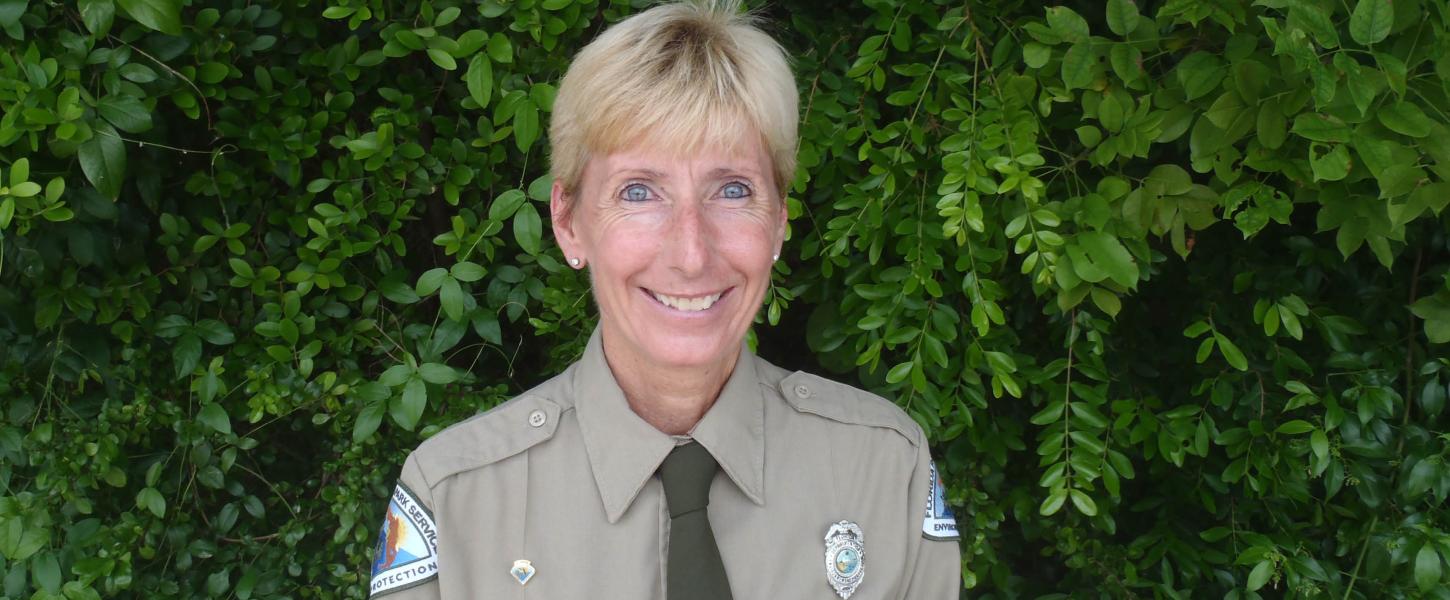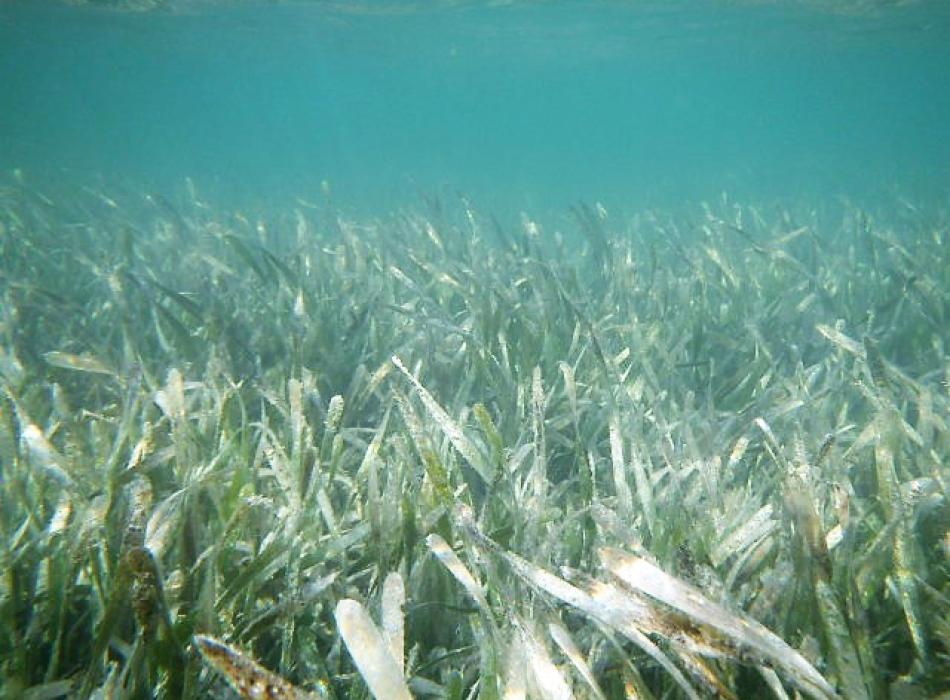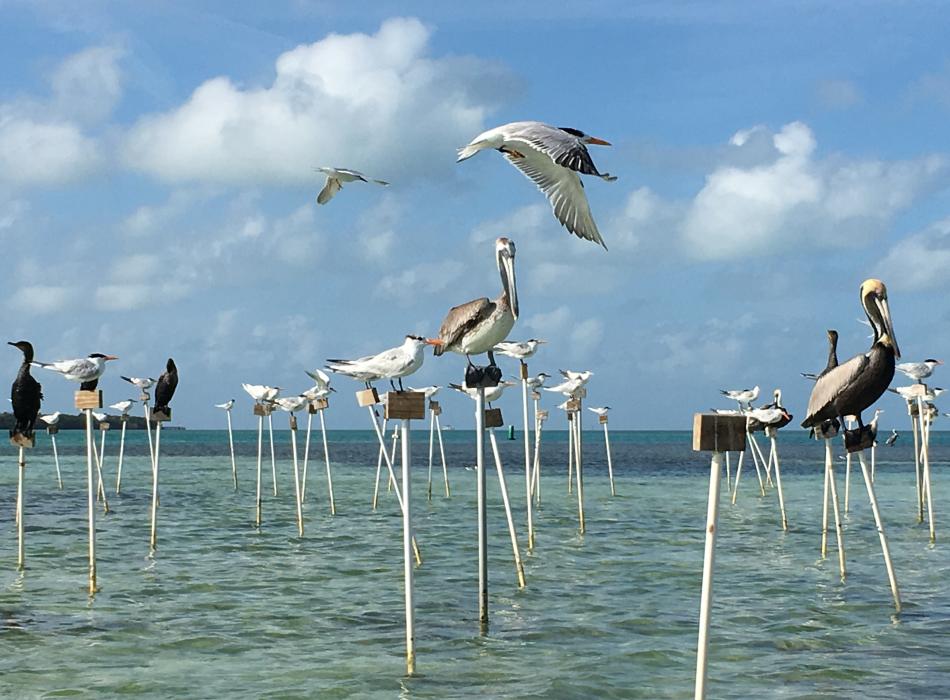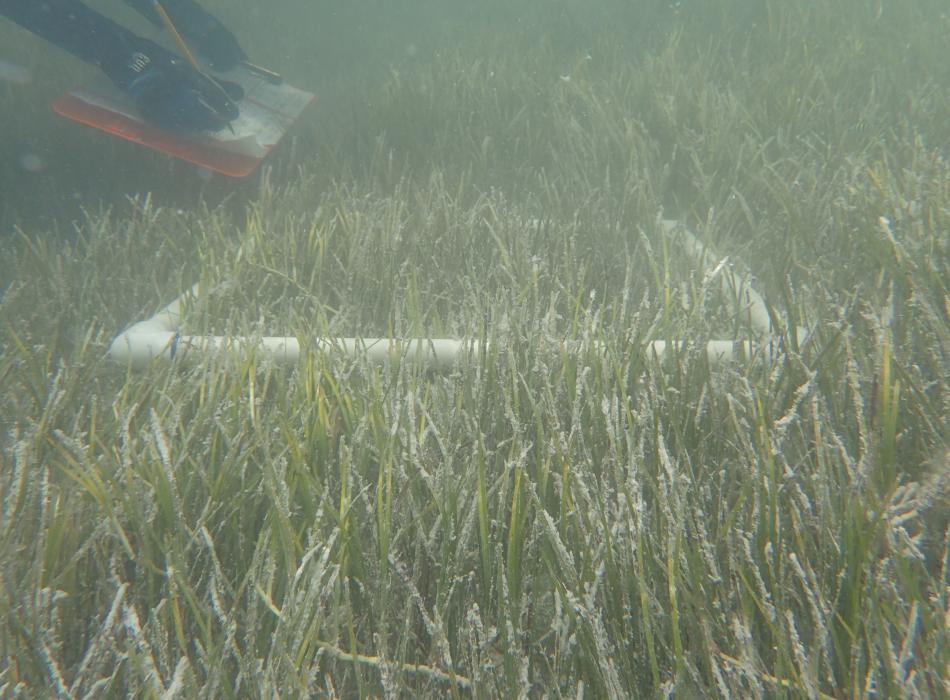Staff Spotlight

March is Seagrass Awareness Month and Women’s History Month
The history of the Florida Keys might be significantly different without the pioneering efforts of biologist Janice Duquesnel.
While seagrass flats might not look like much to an observer, this ecosystem is one of the most productive in the world and is vital to the Florida Keys.
After decades of declines in seagrass health, this habitat needed a hero – enter state parks biologist Janice Duquesnel.
After studying oceanography in college, Janice began her career with the Florida Park Service in 1995. One of her many responsibilities is overseeing the submerged resources in Florida’s state parks, meaning she works to protect underwater habitats – including hundreds of acres of seagrass flats throughout the Florida Keys.
To understand Janice’s contributions, it’s first necessary to understand why seagrasses are worth saving.
Seagrasses are flowering plants that are pollinated by the movement of the water over the grass beds. Small marine crustaceans act like bees, carrying sticky pollen on their backs as they visit the flowers to feed. Seagrass also reproduces by spreading underground stems called rhizomes. Other residents of these underwater gardens include manatees, sea turtles, stingrays, crabs, snails, sea stars, anemones and countless fish species.

Seagrasses improve water quality by keeping water clear. The rhizomes hold bottom sediments in place and the leaf blades help to trap fine sediments from the water column, reducing murkiness and giving the waterways of the Florida Keys their characteristic crystal-blue color.
Seagrass beds are vulnerable to damage from vessel groundings and boat propellers. From above, the impact looks like a scar – the vibrant green is abruptly cut by loose sediment and barren sand. Once the sediments are exposed to the tides, they can become unstable and erode, causing more damage to the surrounding seagrasses as the scar grows.
It is extremely difficult to restore a damaged seagrass bed and, as a result, scars can take more than a decade to heal. Assessing and stabilizing damage as it occurs has been a regular part of Janice’s work for years.
But to truly restore this natural resource, she and her team needed to find a clean, efficient way to repair the scars left from years or even decades ago.
That’s exactly what they did in the early 2000s, when, after extensive research, Janice learned that rocks could be used to “level” those scars. Even better, she enlisted surrounding wildlife to help her efforts.

By placing bird stakes in and around damaged seagrass, Janice discovered that birds such as cormorants, ospreys, terns gulls and pelicans were drawn to the area, and that their naturally occurring waste made for a fine fertilizing treatment.
That fertilizer helped speed along the grass’ regrowth and, soon after, the bottom sediments began to stabilize as well.
With Janice’s discoveries in hand, resource managers around the Florida Keys soon adopted these new techniques to help their own seagrass beds recover from the impacts of boats and their propellers.

Park rangers work diligently to prevent boat propellers from damaging seagrass beds by constantly monitoring buoys and channel markers. When damage does occur, Janice and her team assess the damage and begin the restoration process.
Pioneering women like Janice serve to remind us that safeguarding our natural resources requires smart, creative scientists willing to look at the challenges and imagine new ways to address issues.